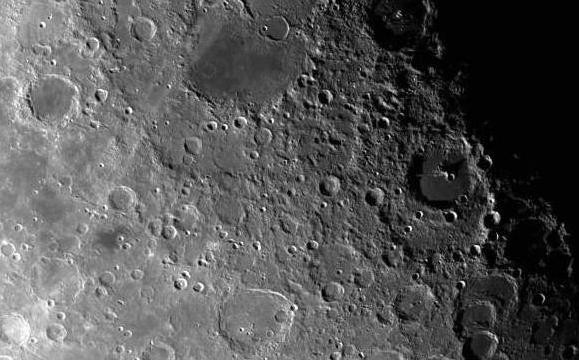The Moon as a Recorder of Early Impacts
Because it is geologically inactive and without water or an atmosphere to weather it's surface, the Moon maintains an excellent record of the impact history of the Earth billions of years ago. Craters are best seen at the 'terminator edge', where the Sun's shadow delineates their structure.

The Largest Craters:
1000-2000 km (due to a 200 km asteroid!).
These date typically from 4 b.y.a. (billion years ago).
There are over a dozen asteroids this large in the Solar System, so such impacts are *NOT* impossible, just highly unlikely (1 in a billion).
Oldest Moon Surface:
4.4 b.y.o., Highlands being the oldest,
typically from 3.9 to 4.1 b.y.o. Impacts have landed on top of past
impacts, which makes it difficult to make out the oldest impacts
(might miss a few). The darker maria (Latin for 'seas') are a bit younger,
being formed from lava flows occurring between 3.0 and 3.7 b.y.a.
The Earth had 20x MORE impacts than the Moon, due to it's greater gravitational pull. Naturally, a 200 km asteroid would be devastating! But was any living thing here to be devastated 3.5 billion years ago?
It appears so..